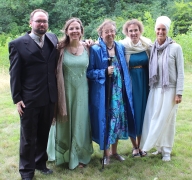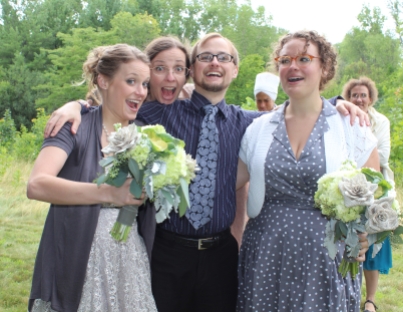“Is this home?
Is this where I should learn to be happy?
Never dreamed
That a home could be dark and cold.
I was told
Every day in my childhood:
Even when we grow old
‘Home will be where the heart is’ –
Never were words so true.
My heart’s far, far away;
Home is too.”

April in Wisconsin is mating season for wild turkeys. And it still snows periodically. Looks like November, but it isn’t.
Amy picks a perfect topic for this week’s Photo Challenge, one that has been foremost on my mind lately — Home.
In November 2017, I moved into a rental house on 56 acres of Nature Preserve in Wisconsin with my partner, Steve, and the inventory of his online book business.

My kids senior portraits from High School reside on the bottom shelf of my grandmother’s Welsh dresser, along with other “artifacts” from Steve’s collection.
Three of my adult children then moved from Chicago to Oregon. They had grown up in Illinois where we had a home in the suburbs before my husband died. We each had a tough time transitioning from that stable place, that nuclear family center, to our own individual lives and partnerships. Through it all, we have maintained our loving bond and our sense of belonging to each other.
Finally, a year before the Coronavirus became news, I decided to separate from Steve and began planning a cross-country move to be closer to my kids. 
I am deeply engaged in the process of establishing HOME for myself. I think the first step is finding clarity in its definition. If home is where the heart is, my home is with my family, with the children my husband and I loved into being. My heart is always with them. This is not an easy time to be a young adult. I want to be able to support them in their journeys toward maturity and purpose in this troubled world.
I had planned an April vacation with my oldest child, who lives here in Madison, to visit the rest of the family in Oregon. Those travel plans got cancelled. We have been using social technology to share thoughts, pictures, videos, and “Game Night” instead.
“Is this home?
Am I here for a day or forever?
Shut away
From the world until who-knows-when.
Oh, but then
As my life has been altered once
It can change again.
Build higher walls around me,
Change every lock and key.
Nothing lasts;
Nothing holds all of me.
My heart’s far, far away,
Home and free!”
~ ‘Home’ from Beauty and the Beast, lyrics by Tim Rice
I probably have no legitimate reason for feeling stuck during this lockdown. I have plenty of room to move around. But my brain had been set on change, and the change is on hold. I have more time to focus on the status quo.
I am still in this house with Steve. We are best friends, both helping each other as much as we can to learn who we are and where we truly belong. We both want happiness, for ourselves and for each other. We have lived together for 12 years and had amazing adventures. We have looked deeply at our hearts and discerned, without blame, that we find spiritual wholeness in different places.
That place of spiritual wholeness — I think that is home.
How do you know your Home?










































